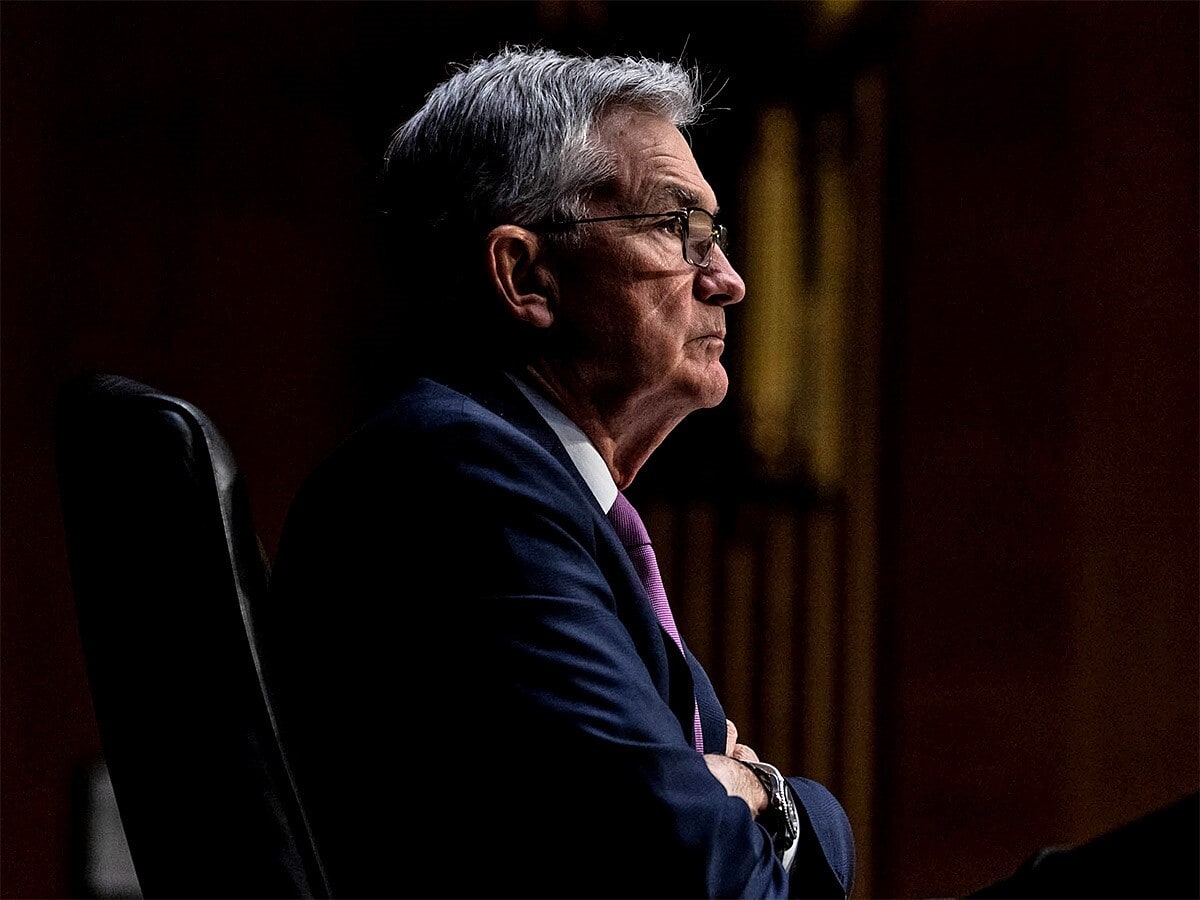
The statement released by the US Federal Reserve at 2.00 pm EDT on Wednesday was met with a short-lived period of buying and optimism. The statement included the line: “The Committee will take into account the cumulative tightening of monetary policy, the lags with which monetary policy affects economic activity and inflation, and economic and financial developments.”
To those unfamiliar with Fed speak, this comment may seem inconsequential. Yet for many investors, it was the moment they had been waiting for. That text said loud and clear that the Fed would be balancing its fight against inflation more evenly with support for a weakening economy, resulting in an end to the historically fast ramp-up in interest rates by the US central bank. Markets rallied and looked poised to break out of trends that have been firmly in place all year.
However, at 2:30 pm on Wednesday, Fed chair Jerome Powell began a one-hour press conference in which two remarks dashed investors’ optimism.
While answering questions from reporters, Powell remarked that “incoming data between the meetings, both the strong labour market report, but particularly the CPI [consumer price index] report, do suggest to me that we may ultimately move to higher [interest rate] levels than we thought at the time of the September meeting”.
Then, to make matters worse, Powell proclaimed that “[we are] trying to make good decisions from a risk management standpoint. Remembering, of course, that … if we were to over-tighten, we could then use our tools strongly to support the economy. Whereas, if we if we don't get inflation under control because we don’t tighten enough now, we're in a situation where inflation will become entrenched”.
A pivotal day for markets
While the earlier statement was a surprise, Powell’s later comments caused alarm by suggesting that the Fed would be willing to fight inflation to the degree of causing economic damage, and find other means to clean up the mess later if need be. For risk asset holders, the message was simple: get out of the way.
Since the Fed’s press conference, many market charts show prices stalling at key levels, consistent with trends in place since the beginning of the year. Rarely does one see so many markets hitting key resistance levels so uniformly.
It is my view that Wednesday was a pivotal day, but not in the way investors hoped. With a poor earnings season almost over and a surprisingly hawkish Fed, it will be difficult for bullish momentum to take hold unless economic data suddenly starts to surprise us with hopeful indicators.
Wednesday’s key reversals provide effective levels to use for risk management. They either play in the direction of recent trends (long US dollar, short pound, short equities, short fixed income), or serve as trends to watch for those waiting for a true Fed pivot.
What this means for FX
Powell made it clear that taming the dollar’ s strength was not his main concern. “The strong dollar is a challenge for some countries”, he acknowledged. “We take all of that into account in our models. We think about the spillovers and that sort of thing. Here in the United States, we have a strong economy we have an economy where inflation is running at 5%”.
Turning to the British pound, we see pound-to-US-dollar prices stalled at what has been the defining down trendline of 2022. This sets up a healthy risk-to-reward ratio. Either the price could reverse and trade above Wednesday’s high, or there may be downside risk to a minimum of £1.09, which coincides with the lower Keltner Channel.
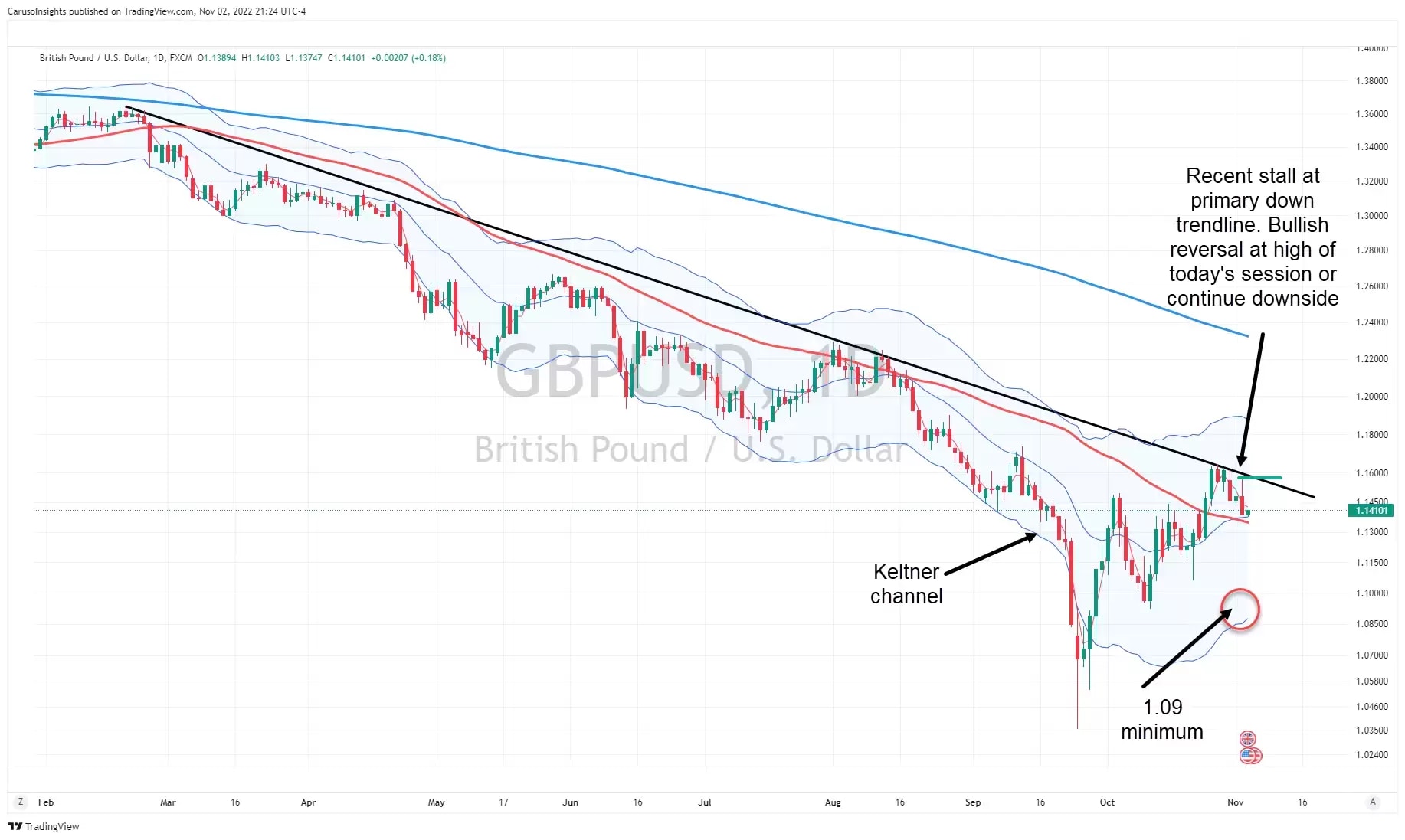
Similarly to the pound, the euro recently stalled against the dollar at the primary downtrend line of 2022, setting up a possible risk-to-reward downside trade. Price is likely either to reverse above the high of Wednesday’s session, or it could be set up for a downward move to a minimum of €0.955 at the lower Keltner Channel.
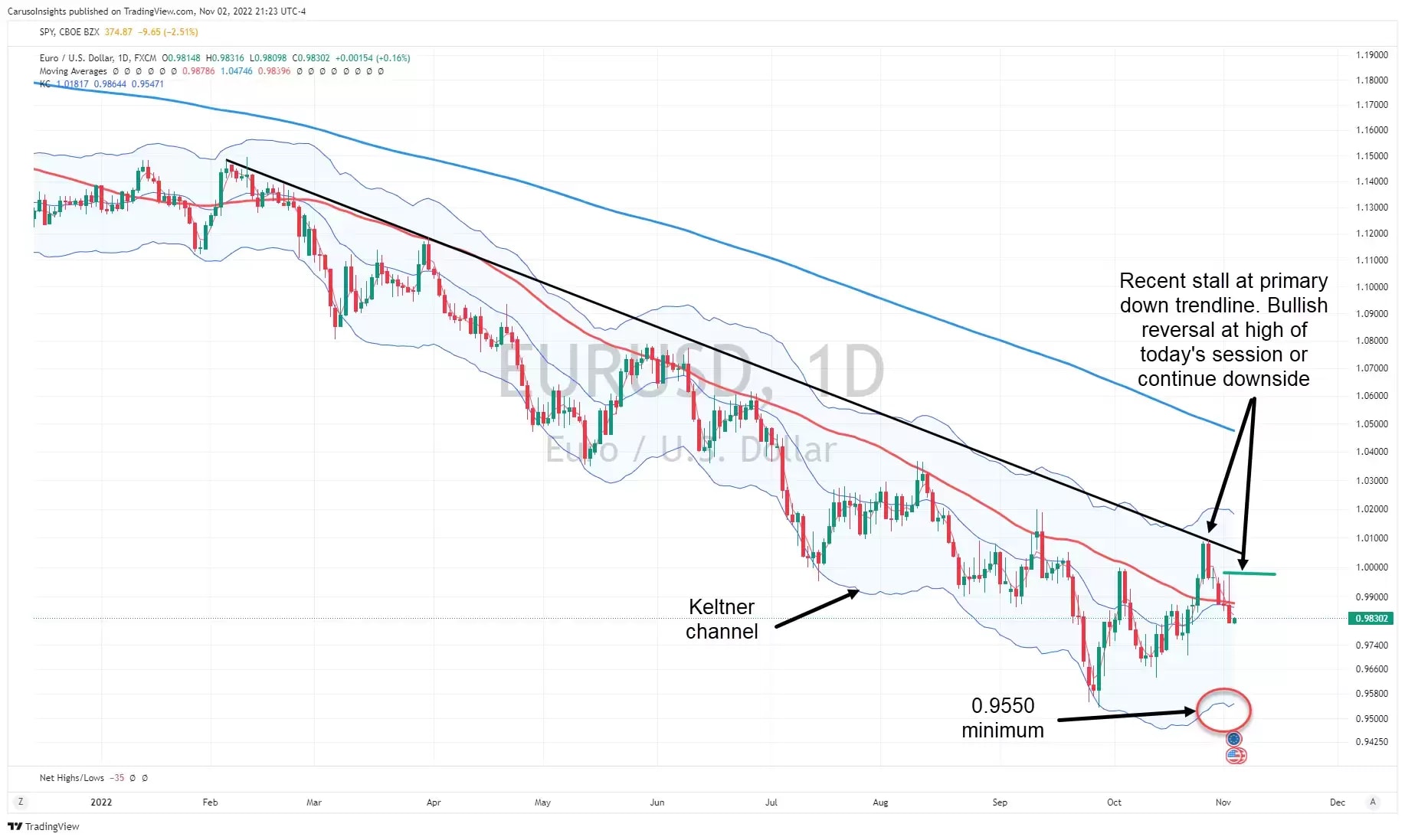
As in most bear markets, correlations across asset classes abound. Equities are currently highly correlated to fixed income and the dollar. The Nasdaq 100, weighed down by poor big-tech earnings, has stalled and reversed just under the 50-day moving average.
We saw a surge in downside volume as well as a resurgence of net 52-week lows on the Nasdaq Composite, pointing to internal deterioration among components. Wednesday’s high was a pivotal price level, and without a bullish reversal above that level, prices are likely to fall to the lower Keltner Channel at $250.
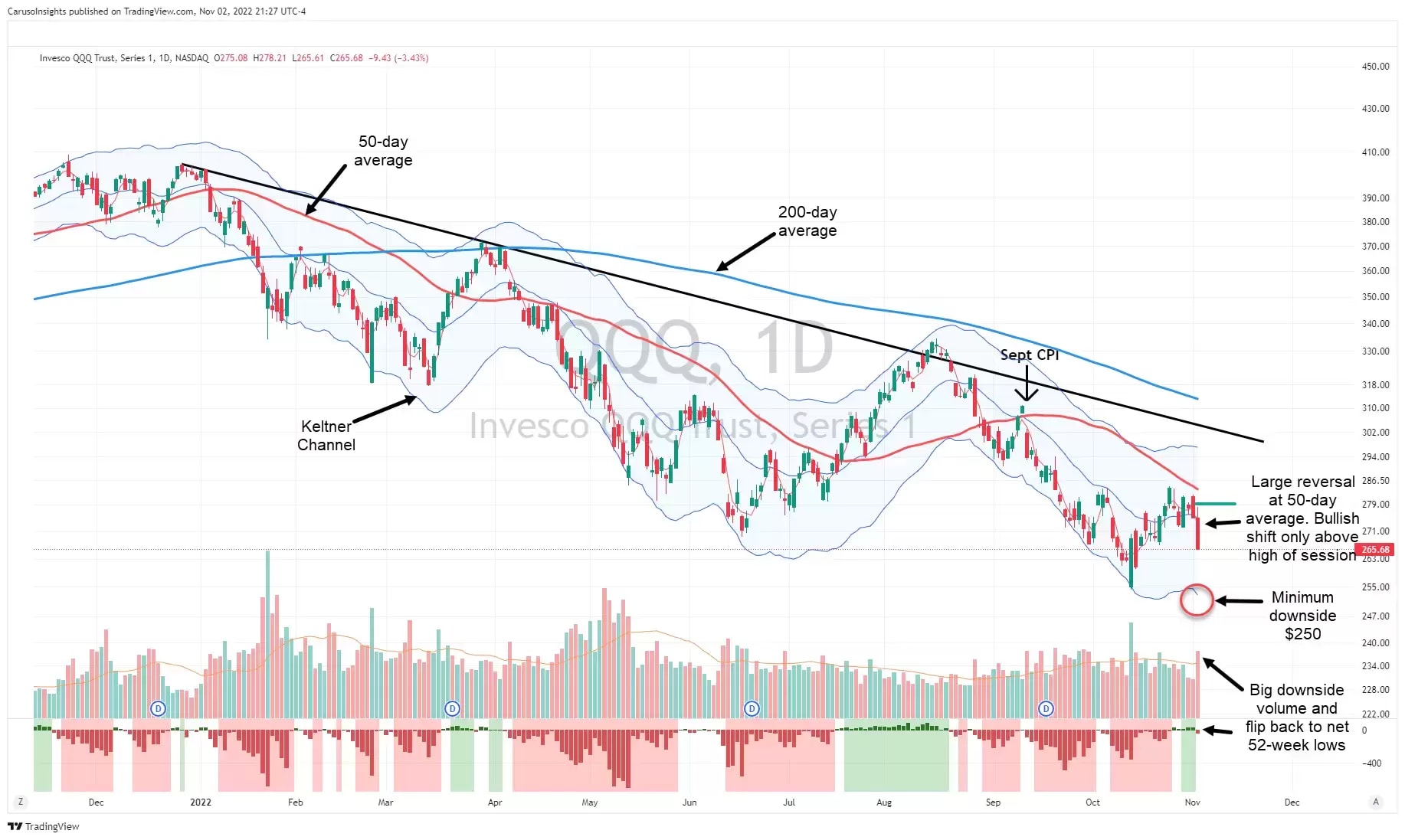
Though the Russell 2000 has recently been able to rally stronger than the Nasdaq, it stalled and reversed strongly at its 200-day moving average. As with the Nasdaq, if prices cannot climb past the high of Wednesday’s session, downside is highly likely with $163 a minimum target at the lower Keltner Channel.
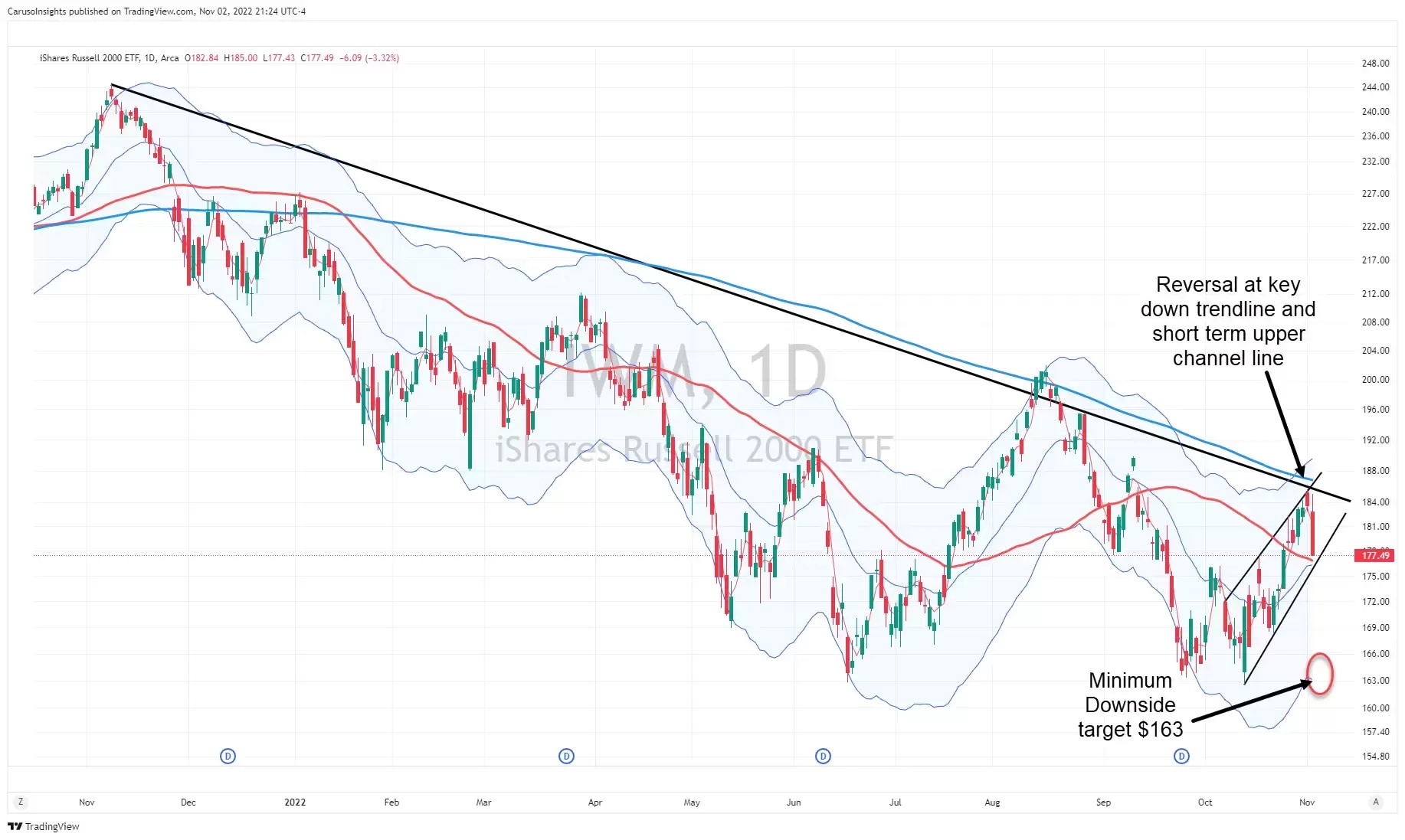
Wednesday marked another important turning point in the 2022 bear market. Similar to how the September CPI report kicked off the most recent down leg of this bear market, Wednesday may mark a similar point providing a risk-to-reward ratio with clearly defined risks.
Pricing is indicative. Past performance is not a reliable indicator of future results. The author's views and findings are his own and should not be relied upon as the basis of a trading or investment decision.
Disclaimer: CMC Markets is an execution-only service provider. The material (whether or not it states any opinions) is for general information purposes only, and does not take into account your personal circumstances or objectives. Nothing in this material is (or should be considered to be) financial, investment or other advice on which reliance should be placed. No opinion given in the material constitutes a recommendation by CMC Markets or the author that any particular investment, security, transaction or investment strategy is suitable for any specific person. The material has not been prepared in accordance with legal requirements designed to promote the independence of investment research. Although we are not specifically prevented from dealing before providing this material, we do not seek to take advantage of the material prior to its dissemination.























